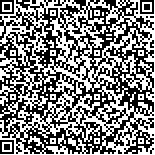| 摘要: |
|
| 关键词: |
| DOI: |
| Received:November 02, 2010Revised:November 04, 2010 |
| 基金项目:This work was partly supported by the National Science Foundation (NSF) Center of Embedded and Network Sensing Program (No. CCR-012), NSF (No. EF-0410438), University of California Discovery grant sponsored by ST Microelectronics, a UCLA faculty research grant to DTB, and the MITWaveScope Project of NSF. |
|
| Exploiting AML algorithm for multiple acoustic source 2D and 3D DOA estimations |
| Juo-Yu LEE,Ralph E. HUDSON,Kung YAO |
| (Electrical Engineering Department, University of California, Los Angeles, California 90095-1594, U.S.A.) |
| Abstract: |
| The approximate maximum likelihood (AML) algorithm shows promises for joint estimations of acoustic source spectrum and direction-of-arrival (DOA). For the multisource case, the AML algorithm remains feasible as one considers an alternating projection procedure based on sequential iterative search on single source parameters. In order to perform multisource beamforming operations, earlier, we used a two-dimensional (2D) sensor array with 2D AML to obtain the DOA estimations for sources in the far field of the array. Now, the 3D AML algorithm enables a 3D sensor array to collect acoustic data for estimation of DOA represented in azimuth and elevation angles. In this paper, we consider two acoustic sources being simultaneously active and derive Cram´er-Rao bound (CRB) on DOA estimation given by a 3D array. Also, we compare the two-source DOA estimation results of 2D AML and 3D AML, respectively. To construct reasonable constraints on sensor topology, we adopt the concept of isotropic array and decouple the interplay between azimuth and elevation angle variations. The 3D AML algorithm exhibits superior spatial separation over its 2D counterpart for multiple sources located at different azimuth and elevation angles. Although the 3D AML algorithm requires more demanding computational complexity, we have developed a number of efficiency enhancements to reduce the loading for the grid search. |
| Key words: Approximate maximum likelihood Direction-of-arrival Alternating projection procedure |

